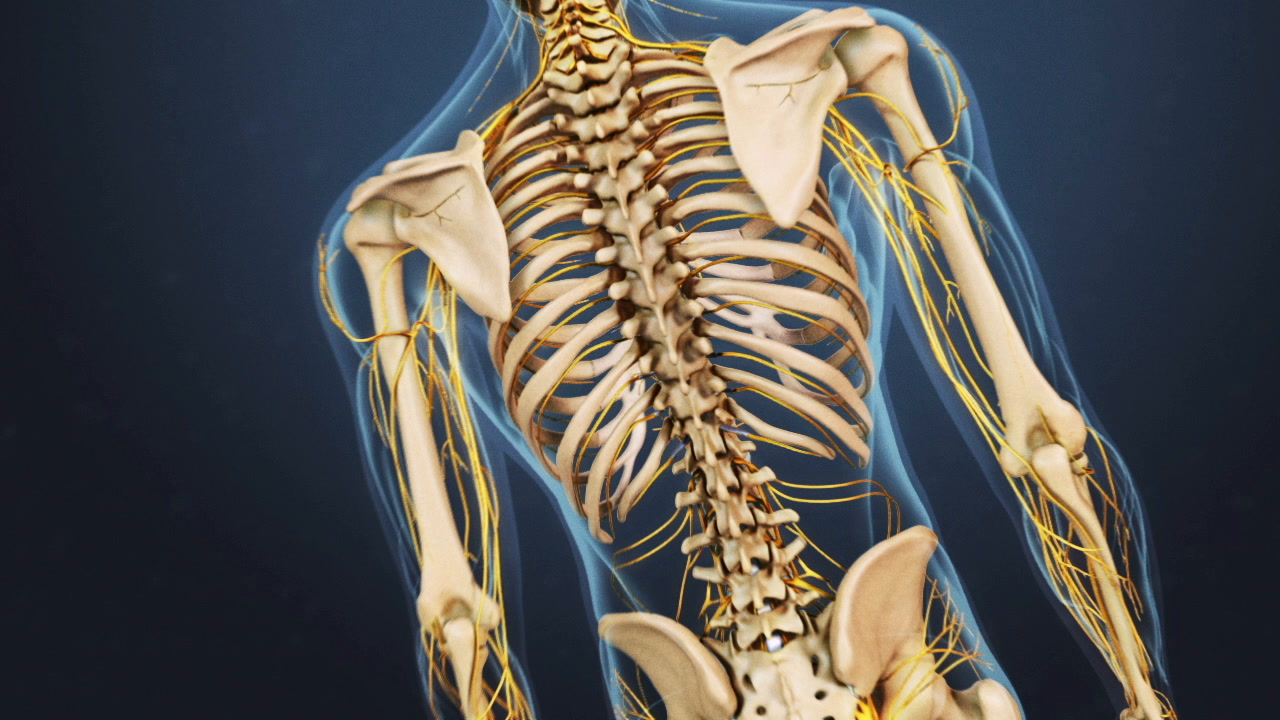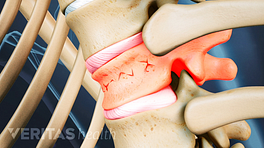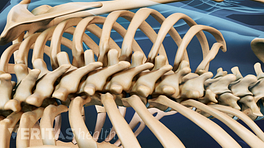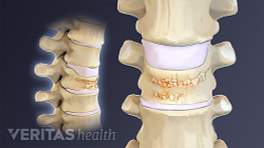Kyphoplasty is a minimally invasive surgery used to treat a spinal compression fracture.
Spinal compression fractures occur primarily in spinal vertebrae that have been weakened by osteoporosis. Compression fractures typically occur in the thoracic region of the spine, which includes the T1 through T12 vertebrae, but may also occur in the lumbar spine, or L1 through L5.
The goals of kyphoplasty are to reduce pain from the fracture, stabilize the vertebra, and restore the vertebra back to its normal height.
In the procedure, the patient lies face down on the operating table. The surgeon makes a small, half-inch incision over the affected area.
Using X-ray guidance, the surgeon inserts a narrow tube through the pedicle into one side of the fractured vertebra. In balloon kyphoplasty, a balloon tamp is then inserted through the tube and into the fractured vertebra.
Once inside the vertebra, the balloon tamp is inflated to create an open cavity inside the bone and to restore height to the collapsed vertebra. The surgeon then deflates and removes the balloon tamp from the vertebra, leaving the new bone cavity behind.
A pasty compound called PMMA, a type of bone cement, is injected into the cavity until it is full. The cement hardens quickly, creating an internal cast inside of the fractured vertebra.
The process may be repeated on the other side of the vertebral body to ensure uniformity and increase the chances of complete deformity correction.
In other forms of kyphoplasty, other surgical approaches for creating the cavity may be used, such as a net or ball.
The surgeon then closes the incision. The patient stays on the operating table while the cement hardens, which usually takes about 5 minutes.
Most patients can go home the same day as the procedure.








